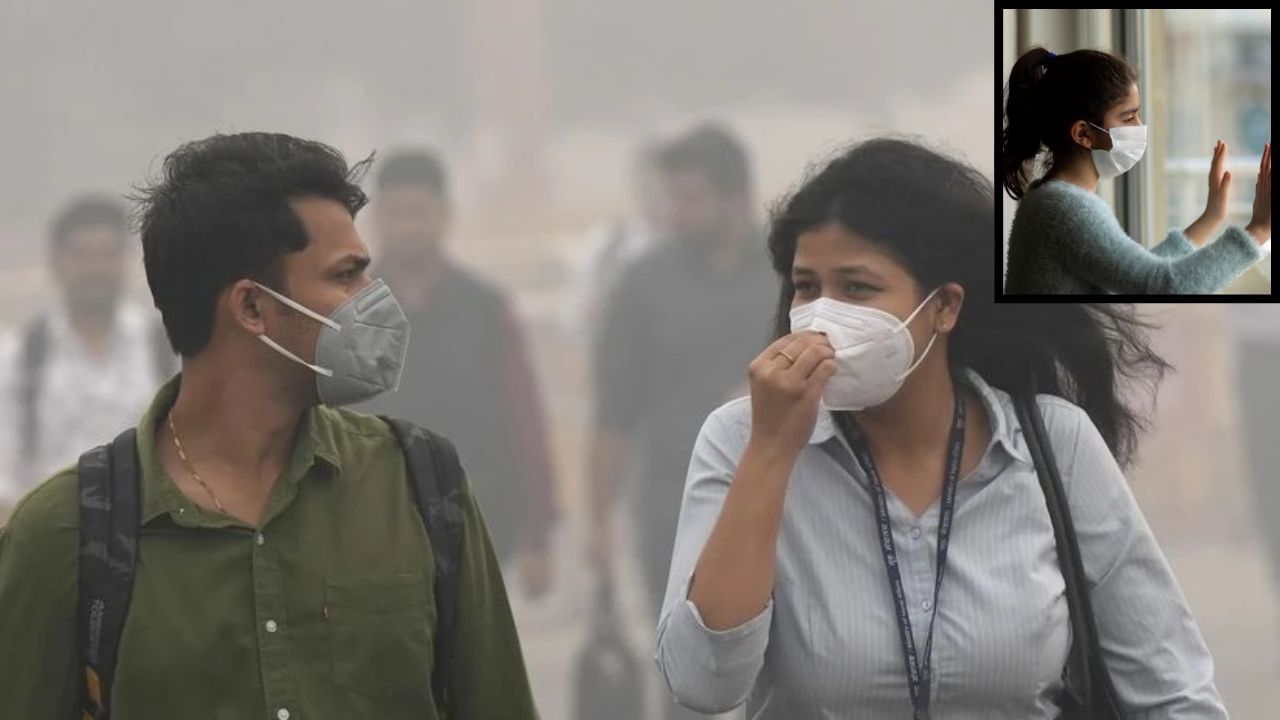 English
English

Delhi-NCR faces a double blow as toxic air and viral infections surge together. A new survey reveals 3 in 4 households have at least one person unwell, blurring the line between pollution-related distress and viral illness. How bad is the capital’s health crisis?

The capital’s air quality has again plunged into “severe” category.
New Delhi: As the winter chill sets in, Delhi-NCR residents are battling a dangerous mix of toxic air and viral infections, with a recent survey revealing that three out of every four households have at least one person unwell. The findings underscore a worsening public health crisis in the region, where pollution and respiratory illnesses have become an annual nightmare.
The capital’s air quality has once again plunged into the “severe” category, with the Air Quality Index (AQI) hovering between 400 and 500 across most areas.
The PM 2.5 concentration has soared to 350, nearly ten times higher than the safe limit of 35 prescribed by the World Health Organization.
Weather Today: Hazy skies and no rain; festival flames still choking Delhi-NCR?
Experts attribute the toxic haze to a combination of post-Diwali emissions, farm fires in Punjab and Haryana, construction dust, and vehicular pollution. The meteorological conditions particularly stagnant winds and dropping night temperatures—are trapping pollutants close to the surface, aggravating the situation.
Residents are reporting classic pollution-related symptoms: breathing difficulty, sore throat, coughing, burning eyes, headaches, and nasal congestion. Doctors across Delhi and Gurugram say outpatient visits for respiratory and viral issues have doubled in the past two weeks.
The survey, conducted by LocalCircles, received over 15,500 responses from residents in Delhi, Noida, Gurugram, Faridabad, and Ghaziabad. The results depict a worrying trend: 75% of households now have one or more members suffering from viral or pollution-related symptoms.
When asked about the number of people unwell in their homes:
This represents a sharp increase from late September, when just 56% of households had reported illness. By mid-October, the figure had climbed to 69%, and now stands at a staggering 75%, signaling a rapid escalation of both viral and environmental health distress.
Health professionals warn that air pollution and viral infections amplify each other’s impact, particularly among children, the elderly, and those with pre-existing respiratory or cardiac issues. Polluted air weakens immunity and irritates the respiratory tract, making people more susceptible to viral infections.
Dr. Rajesh Chawla, a senior pulmonologist in Delhi, said, “We are witnessing a perfect storm people are breathing in highly toxic air while also battling viral fevers. The symptoms overlap, making diagnosis and treatment more challenging.”
While the Delhi government has implemented emergency measures such as a construction ban, restrictions on diesel generators, and advisories for school closures on high-pollution days, experts believe more long-term structural actionis required.
Citizens are turning to air purifiers, N95 masks, and home remedies, but the health toll continues to rise. Social media platforms are flooded with complaints about persistent coughs and fatigue, with many referring to it as a “silent pandemic of sick homes.”
As winter deepens, Delhi-NCR’s toxic haze and viral wave are likely to worsen unless immediate and sustained interventions are made. The LocalCircles report serves as yet another reminder that the region’s recurring health emergency is not just an environmental issue-but a crisis of survival for millions breathing unsafe air every day.